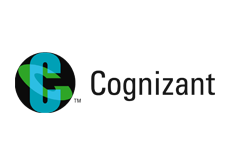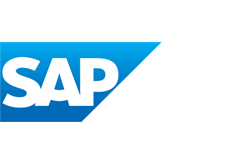This is due to IRS taxation laws, and the fact that cash accounting is less accurate than accrual accounting in the short term. Cash accounting may not give an accurate picture of your company’s overall financial position. It’s very black-or-white and doesn’t take nuances into account like the time it takes for transactions to go through, inventory on hand, and expenses incurred. This discrepancy can paint an inaccurate picture of how well the company is doing and can make comparative analysis difficult especially if you owe multiple debts. If you opt for a cash based accounting method, you likely won’t need to hire a full-time accountant. Xero gives you the tools to keep your business financially stable and support its growth.
Gary is a seasoned financial executive with over two decades of experience spanning high-growth technology companies, consulting firms, and startups. As a strategic finance leader, he has consistently demonstrated the ability to drive operational excellence while scaling organizations through critical growth phases. Several requirements must be met to ensure that this accounting method is appropriate. We explain its differences with accrual accounting, along with example, advantages & disadvantages.
How to calculate the cash ratio
- As businesses grow, these technologies can adapt to changing needs, such as incorporating new accounts or modifying existing ones, thus offering scalability.
- Accurate cash disbursement records help businesses comply with various financial regulations and reporting requirements, such as tax laws and accounting standards.
- The transaction is recorded in the cash disbursement journal, along with relevant details such as payee, amount, and expense category.
- Our online training provides access to the premier financial statements training taught by Joe Knight.
The downside of a cashless economy is that it relies on the stability of electrical and payments networks to function effectively. Checks, debit cards, credit cards, online banking, and smartphone payment technology have decreased the need for people to carry cash in any form. There are also drawbacks to using the cash method of accounting, include these disadvantages. If you purchased blank hats and embroidery thread for $300, you would only record the $300 amount once the bills were paid. Finding the right balance is key to managing financial risk so your business is ready to seize growth opportunities.
Are you ready to get back to running your business?
Acting as the financial DNA of business accounting, it provides a detailed directory of various accounts essential for financial accounting practices. On the other hand, investors may not be interested in a company that has too high of a cash ratio, which may indicate that it’s holding onto too much cash and not willing to invest in growth or expansion. Every investor will have their own philosophy regarding what they look for in a cash ratio. However, they may see a company with a low cash ratio as unable to cover short-term liabilities, and therefore unable to invest in growth initiatives that will generate a return on their investment. Put differently, the current ratio assesses whether a company could pay off all current liabilities by liquidating all current assets. Compared to the cash ratio, the current ratio takes a wider view of a company’s liquidity.
What is a healthy cash ratio?
- For example, this would be the case if the company had $255,000 in cash and cash equivalents, and the same amount in short-term liabilities.
- Regularly back up your data and perform test runs before finalizing any changes or updates to the COA within the accounting software.
- In other words, you “recognize” revenue on your income statement when the cash enters your bank account, and expenses are recorded when they are paid.
- Although digital payment methods have reduced the need for physical cash reserves, petty cash is still included in current assets when used for operational purposes.
Many times companies combine cash and cash equivalents on the balance sheet. Since cash equivalents are closely related to cash, the true meaning of the cash account is not distorted on the balance sheet. Yes, most small businesses and sole proprietors can use cash accounting to track business expenses and income. It’s a simple method that works best for those with annual gross receipts totaling under $25M for the past 3 years.
Understanding Excel If Statements
They provide insight into a company’s financial health, growth strategy, and ability to self-fund operations and expansion through internal profits. Accounts payable (AP) automation software plays a significant role in enhancing the management and optimization of a chart of accounts. It automates routine accounting tasks, reducing the likelihood of manual errors and saving time. This automation extends to the categorization of transactions, which boosts data accuracy and ensures financial records are consistently reliable. The cash ratio is a liquidity ratio that reflects a company’s ability to meet its near-term obligations with just cash and cash equivalents.
This method captures the true economic activity of a business, offering a fuller picture of financial performance over time. Knowing what’s coming in and going out isn’t just good practice—it’s the foundation for choosing the right accounting method. The following chart explains when we record revenues and expenses using one method over the other so you know what to expect. Financial Intelligence takes you through all the financial statements and financial jargon giving you the confidence to understand what it all means and why it matters.
Cash basis accounting is a method of bookkeeping by recording expenses and income only as money leaves and enters your bank account. It’s a pretty straightforward method many people use to deal with their personal finances in day-to-day life. For a lot of small businesses—especially those just starting out—cash accounting is the simplest way to keep track of finances.
Therefore, simplicity is the only real “pro” of cash accounting, but it’s only simple if your business is, too. If you run a one-person shop and do not plan to take out a loan, hire, or grow, you can get away with it. In this scenario, you typically don’t have receivables or accounts payable; you earn and spend money as you go.
According to cash accounting method, only $100,000 would be recorded as cash revenue and not another $100,000, sold on credit. However, if we look at the accrual basis of accounting, $200,000 would be recorded as the company’s revenue. A balance sheet is a statement that shows everything your company owns and what it owes.
Helping in Financial Planning
Profit represents earnings from a specific period, while retained earnings are the cumulative profits kept in the business over its entire history. Not all profits become retained earnings, as some may be distributed as dividends. Tailor these categories and subcategories to reflect your business’s unique operational needs, ensuring they capture all types of transactions your business encounters.
If the invoice is not paid until Jan. 5, 2022, under cash accounting, the $10,000 would not be counted as income for 2021. Instead, it would be taxed as part of the agency’s income in 2022, when the cash was actually received. Cash in its physical form is the simplest, most broadly accepted and reliable form of payment, which is why many businesses only accept cash.
These include accounts payable, wages, taxes owed, and current portions of long-term debt which are crucial for managing immediate financial responsibilities. Liabilities represent the financial obligations of a business that are due to be paid to external parties. These are settled over time through cash definition accounting the transfer of economic benefits including money, goods, or services. The platform helps businesses automate key financial workflows, sync real-time data to accounting software, and provide visibility into urgent to-do’s. A cash ratio above 1.0 means the company has more cash than it needs to meet its obligations.
Categorize Accounts
Finally, through advanced analytics, technology can offer insights for further optimization of the chart of accounts, identifying trends and areas for improvement. It ensures accurate financial reporting and record-keeping, facilitating the calculation of taxable income and adherence to tax laws. Later on, regularly review and update your COA to reflect changes in your business operations, industry standards, or regulatory requirements. This may involve adding new accounts, removing obsolete ones, or reclassifying existing accounts to better suit your business’s evolving needs. The numbering system forms the foundation of your chart of accounts, offering a structured method to organize financial information. It’s designed to be intuitive and scalable, allowing for future growth without requiring a complete redesign.
Lenders, investors, and stakeholders use gearing ratios to assess financial stability. A higher ratio signals greater reliance on debt, which means increased financial risk but also potential for higher returns. A lower ratio suggests a stronger equity position, reducing risk but potentially limiting growth opportunities. As businesses grow, these technologies can adapt to changing needs, such as incorporating new accounts or modifying existing ones, thus offering scalability. Moreover, technology streamlines the audit process by organizing financial data in an easily accessible manner for auditors.
The main difference between accrual and cash basis accounting is when you record revenue and expenses. Businesses that make over $25 million per year must be compliant with generally accepted accounting principles, or the GAAP. If there’s any possibility that your company could gross more than $25 million in a year, you should use accrual basis accounting instead of cash accounting.
Many consulting firms are initially owner-operated, with one consultant providing services to a few clients, aiming to match their salary. However, if the consultant is successful, they will eventually have more opportunities than they can handle alone. At that point, they can either refuse additional work and keep things small or grow, inviting more clients and other participants (partners, employees, lenders, etc.) into the business. Cash basis accounting is a simple accounting system that does not consider income from credit accounts, so the cash system of recording transactions is only used by small businesses that deal exclusively in cash. Cash basis accounting is not acceptable under the Generally Acceptable Accounting Principles (GAAP) 1Financial Accounting Standards Board (FASB).










